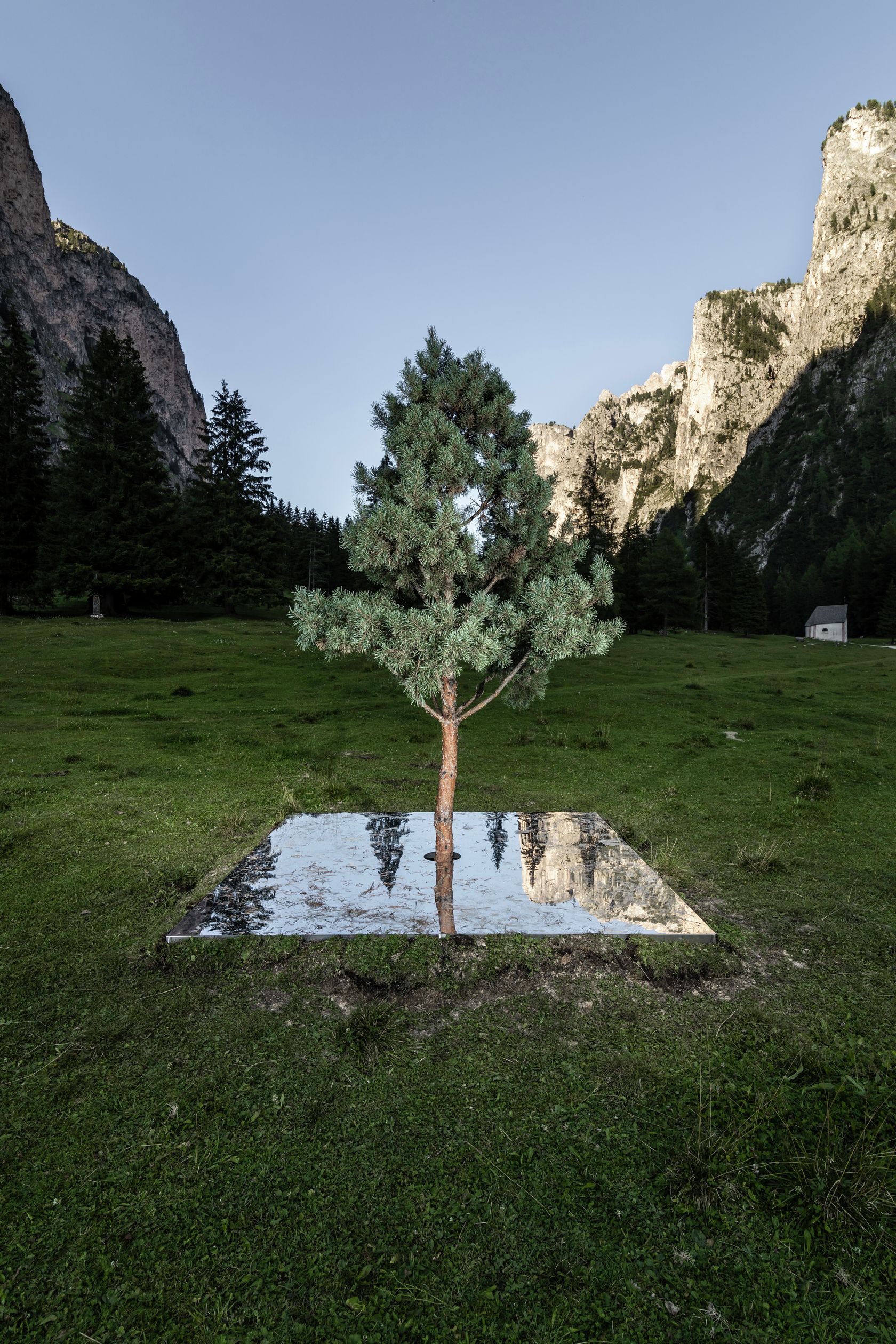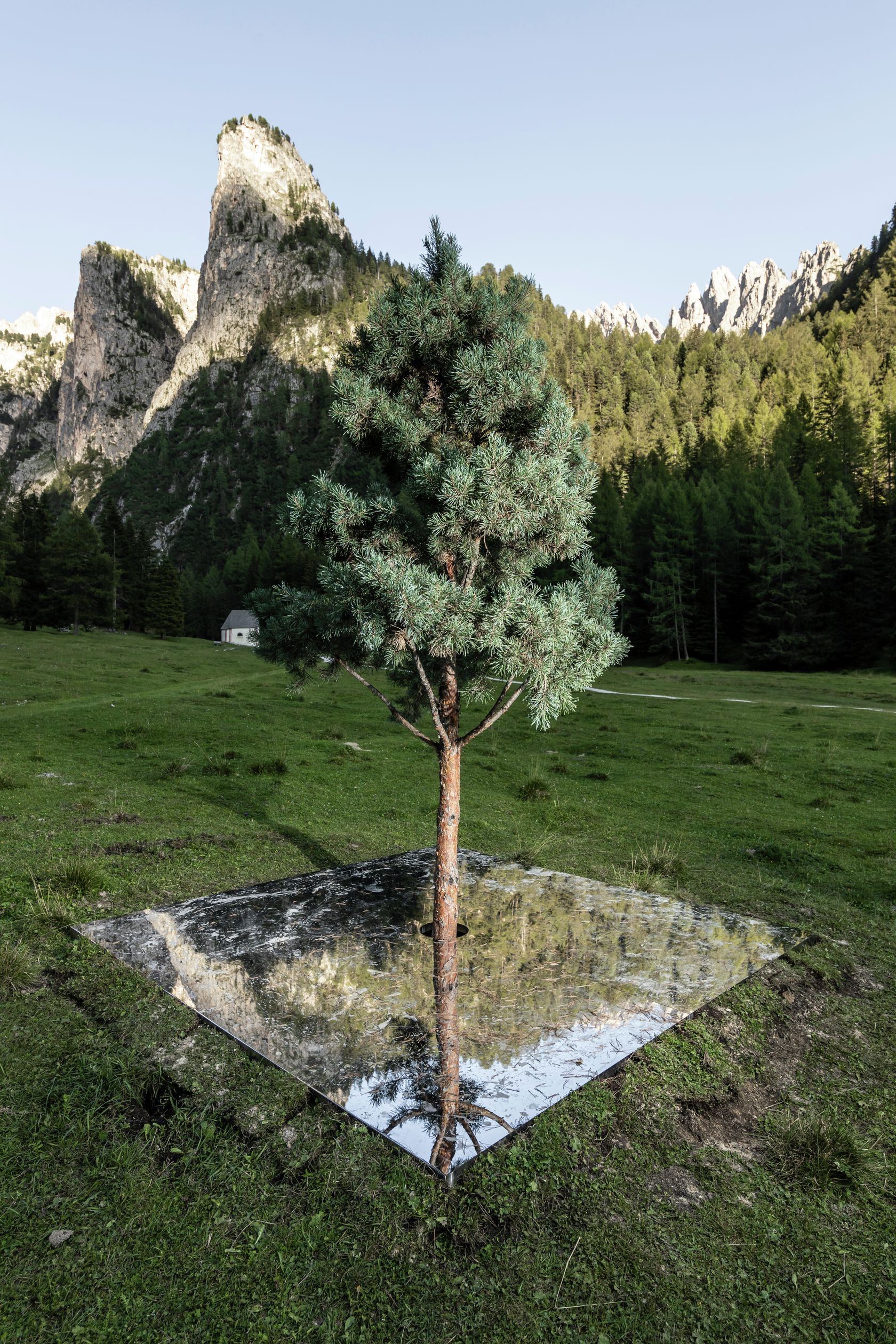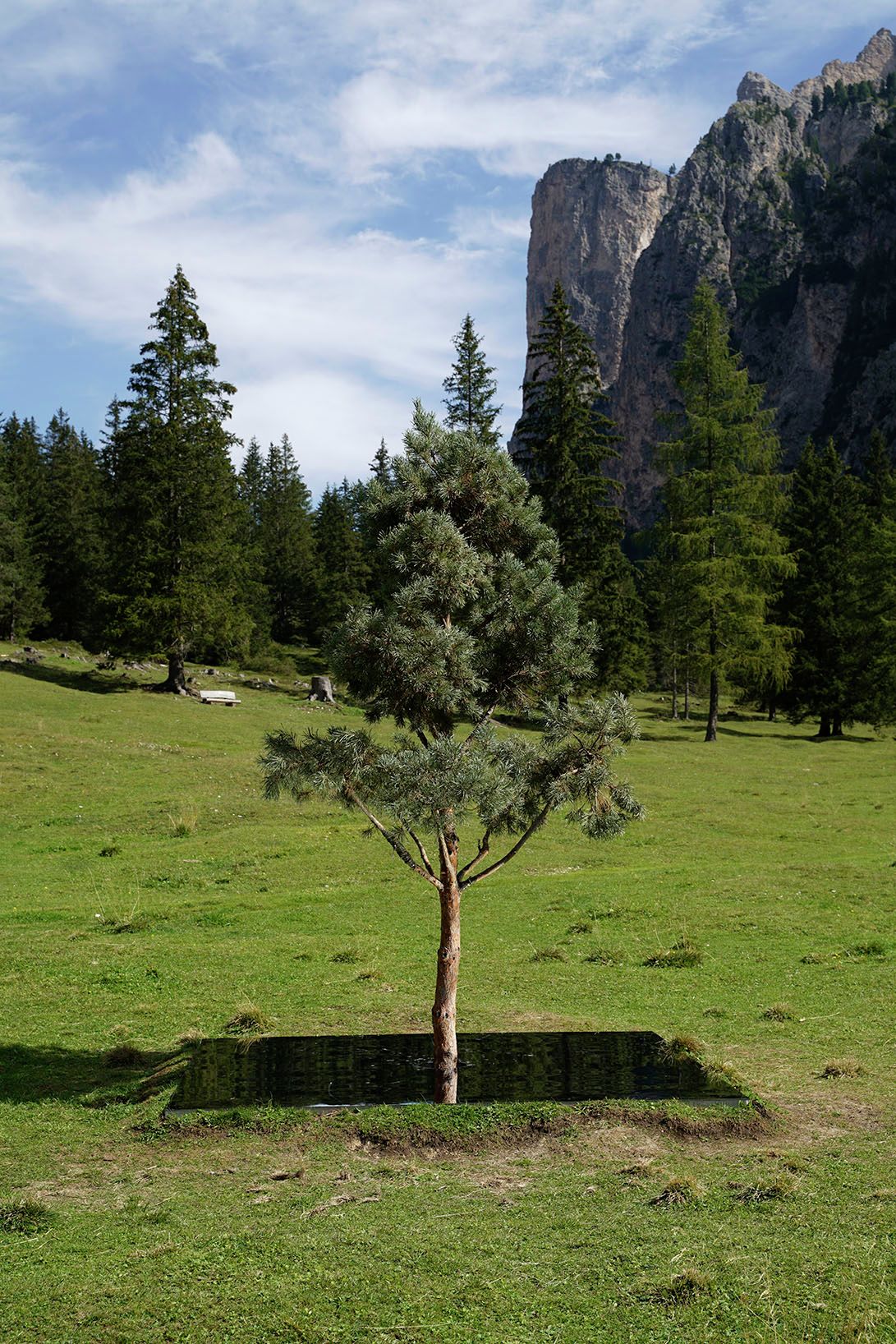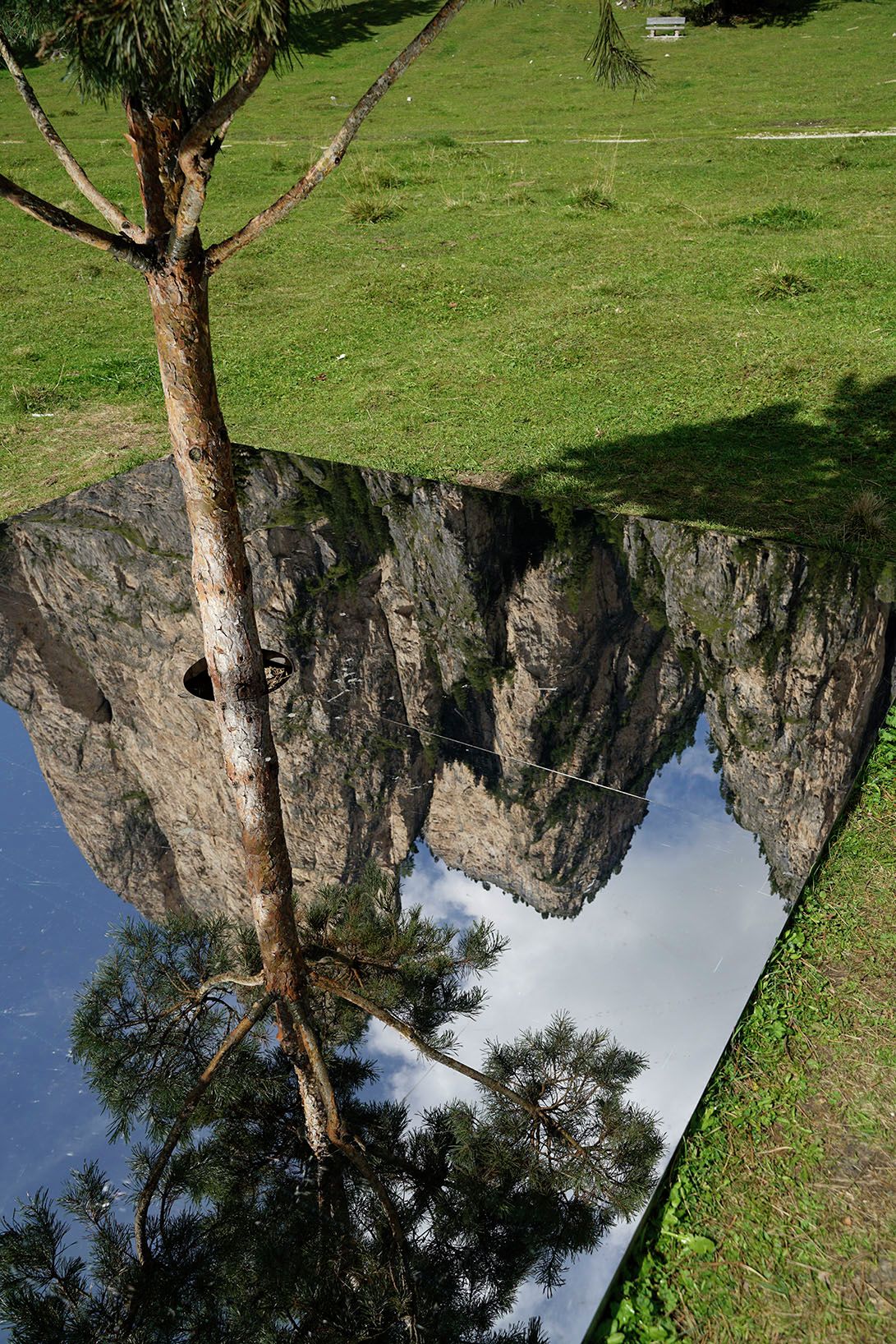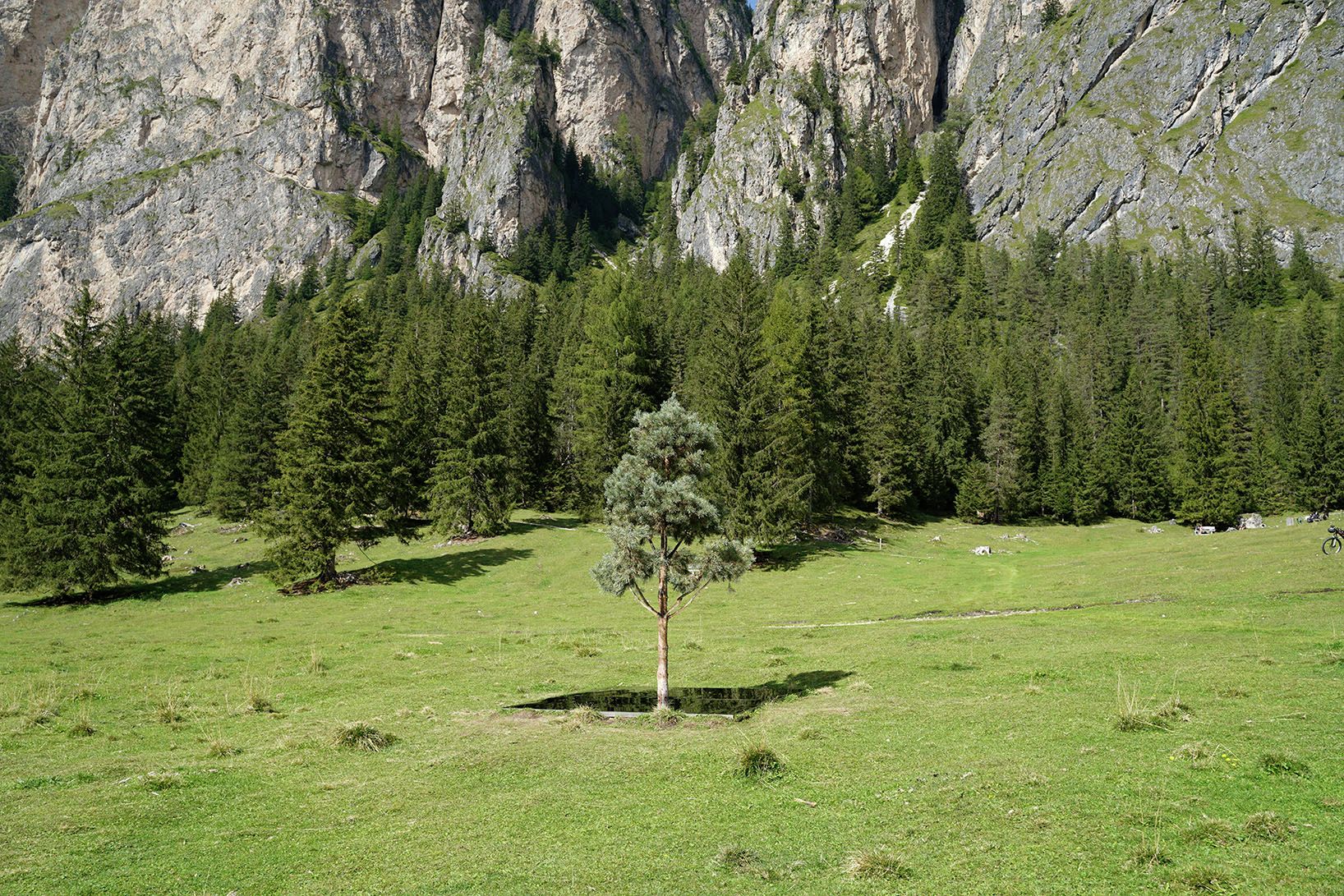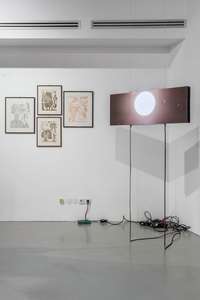For the Biennale Gherdëina 7, Håkansson has developed a new project specially devised for installation in a precise place: it consists of a polished metal plate sitting like a square base around a solitary tree in the local landscape, placing nature and technology together on the same pictorial plane. The glossy surface of the plate reflects the landscape and the sky, thus enabling the spectator to observe nature in changeable conditions. The tree thus becomes an observation point and makes it possible to catch a sight of things that would not be perceivable in normal circumstances. At the same time, the mirror captures the image of the observers themselves, making them conscious of being part, not only symbolically but also physically, of nature, whose flowering or decline are directly correlated to their own existence.
By presenting certain natural phenomena in a new context, such as an exhibition space, Håkansson enables the viewer to become a critical observer. In his video work JUNE 22, 2020 203943 (Culicidae sp.), Henrik Håkansson observes repetitions and patterns created by the flight of the mosquito, which is often considered a parasite. The film was shot during the time of the sun going down, on June 22, at 8:39 pm, near Berlin. The video forms part of a series of films created in the context of an ongoing research project in which time fragments are caught with the help of a high-speed camera in various resolutions and speeds that document mostly arbitrary activities and movements of flying insects in different surroundings. These series may be regarded as screen tests, in reference to Andy Warhol’s idea of film portraits, in which time and date are set in relation to the artistic practice according to On Kawara’s concepts of time and being. Håkansson’s works work as a subtle dialogue between man, nature and space, and reflect not only the common system of values, but also man’s intervention in the sensitive balance of natural processes.


